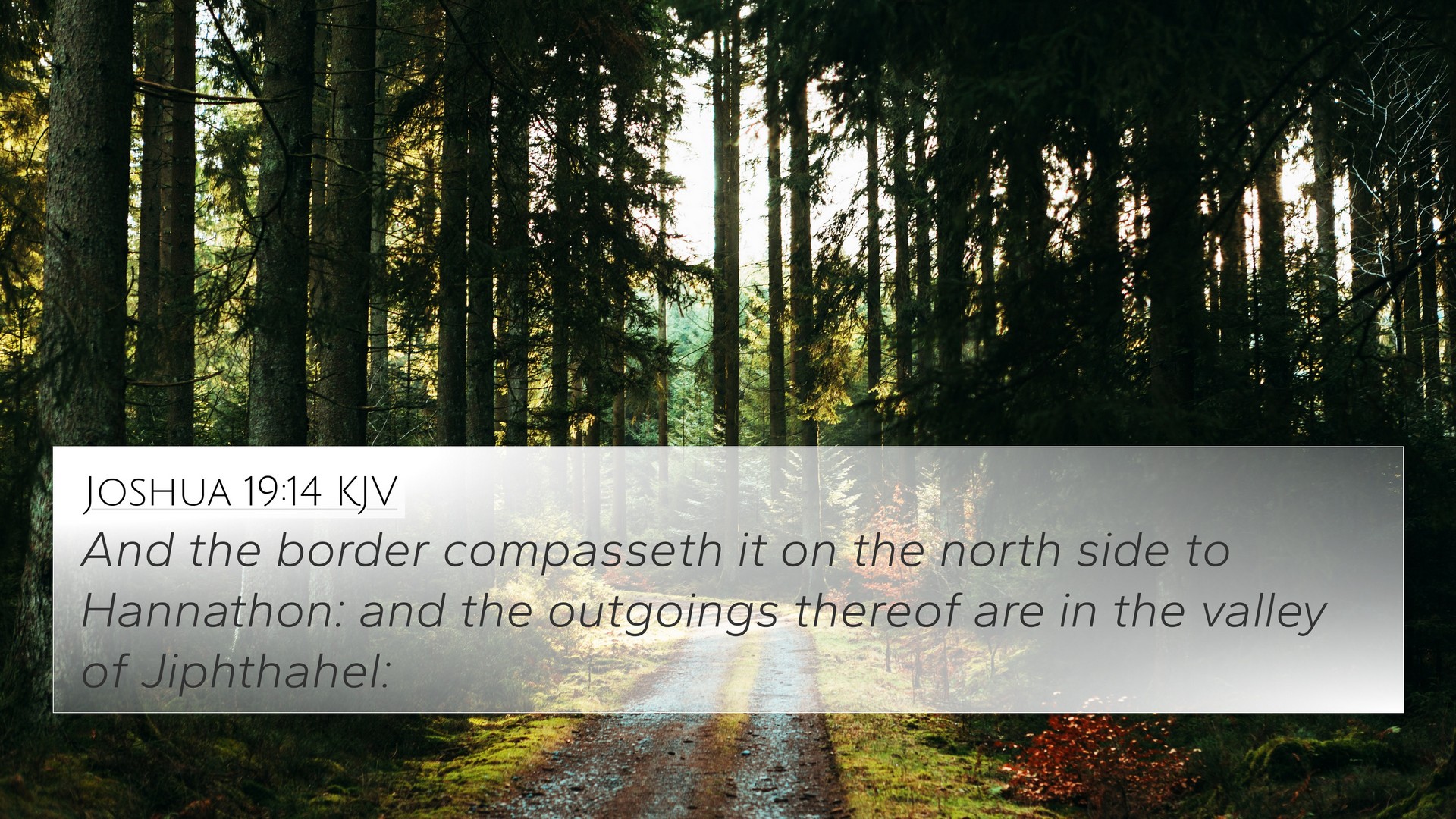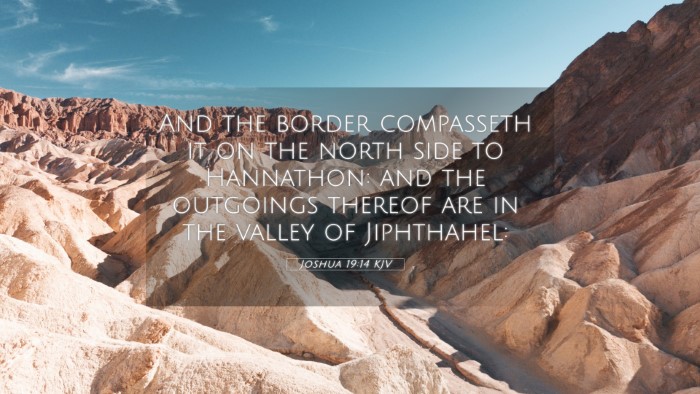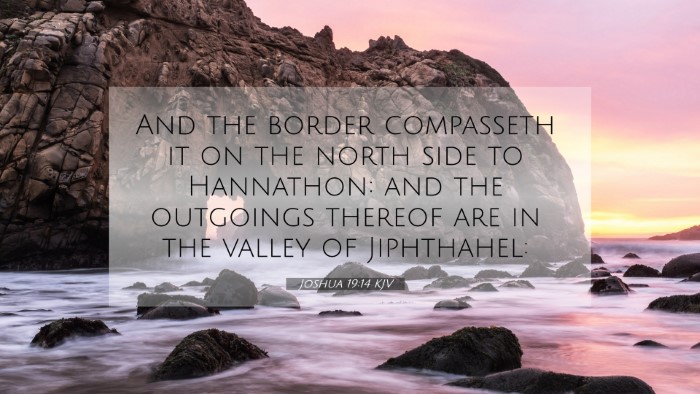Understanding Joshua 19:14
Verse Context: Joshua 19:14 states, “And the border went about it on the north side to Hannathon: and the outgoings thereof were at the valley of Jiphthah-el.” This verse describes geographical boundaries within the allotments of land for the tribes of Israel, specifically focusing on the territory of Zebulun. Understanding such verses requires careful examination of their historical and spiritual significance.
Meaning and Interpretation
This verse records the description of the borders of Zebulun's inheritance, which is significant in several ways:
- Historical Context: The allotments of land for each tribe of Israel are foundational to the history of the nation. Matthew Henry points out that this systematic division of land represents God’s fulfillment of his promises to His people.
- Geographical Details: The specifics regarding boundaries, such as “Hannathon” and “the valley of Jiphthah-el,” highlight God’s meticulous care in allocating lands to the tribes, as noted by Albert Barnes.
- Theological Implications: Adam Clarke emphasizes that understanding these borders demonstrates the faithfulness of God to His covenant with Israel. The precise locations may serve to remind believers of God's guidance and provision.
Connections and Cross-References
In analyzing Joshua 19:14, several Bible verses can be cross-referenced to enrich understanding:
- Genesis 49:13: "Zebulun shall dwell at the haven of the sea; and he shall be for an haven of ships; and his border shall be unto Zidon." This verse prophesies the territory of Zebulun and its significance as a coastal region.
- Numbers 34:25: "And the prince of the tribe of the children of Zebulun, Eli-zaphan the son of Parnach." This illustrates the leadership within the tribe and its role in claiming their inheritance.
- Deuteronomy 33:18-19: "And of Zebulun he said, Rejoice, Zebulun, in thy going out; and, Issachar, in thy tents... They shall call the people unto the mountains." This passage highlights the blessing and calling of Zebulun among the tribes.
- Luke 2:36-38: "And there was one Anna, a prophetess, of the tribe of Asher... And she coming in that instant gave thanks likewise unto the Lord." This shows the connection of the tribes and God's plan extended beyond borders to spiritual realities.
- Matthew 4:13-16: "And leaving Nazareth, he came and dwelt in Capernaum, which is upon the sea coast, in the borders of Zebulun and Naphtalim..." Here, the New Testament reveals the importance of the region as part of Jesus’ ministry.
- Psalms 68:27: "There is little Benjamin with their ruler, the princes of Judah and their council, the princes of Zebulun, and the princes of Naphtali." The psalmists acknowledge the tribes’ roles and unity in worship.
- Revelation 7:8: "Of the tribe of Zebulun were sealed twelve thousand." This signifies the enduring identity and purpose of Zebulun within God's redemptive plan.
Thematic Connections
Joshua 19:14 invites reflections on broader themes found throughout Scripture:
- Faithfulness of God: God’s promises to the tribes of Israel underscore His faithfulness, a theme persistent from Genesis to Revelation.
- Community and Identity: The identity of tribes and their land allotments serves as a metaphor for community, belonging, and the family of faith.
- Divine Providence: The careful delineation of borders reminds believers of God’s providence in guiding His people.
Conclusion
Understanding Joshua 19:14 involves recognizing the interplay of history, geography, and theology in Scripture. As believers engage in cross-referencing biblical texts, they uncover deeper insights regarding God’s promises and His plan for humanity. In summary:
- Apply the tools for Bible cross-referencing to explore not only the historical context but also the spiritual implications of such verses.
- Investigate how different passages interrelate, revealing God's consistent theme of fellowship, service, and promise across the ages.
- Encourage others in their Bible study by demonstrating how to identify connections between Old and New Testaments, thus fostering an enriched understanding of faith.
In conclusion, Joshua 19:14 not only stands alone in its detailing of Zebulun’s territory but also invites readers to engage in a broader exploration of inter-Biblical dialogue. Through comparative Bible verse analysis, one can appreciate the richness of scriptural teachings and their application today.


